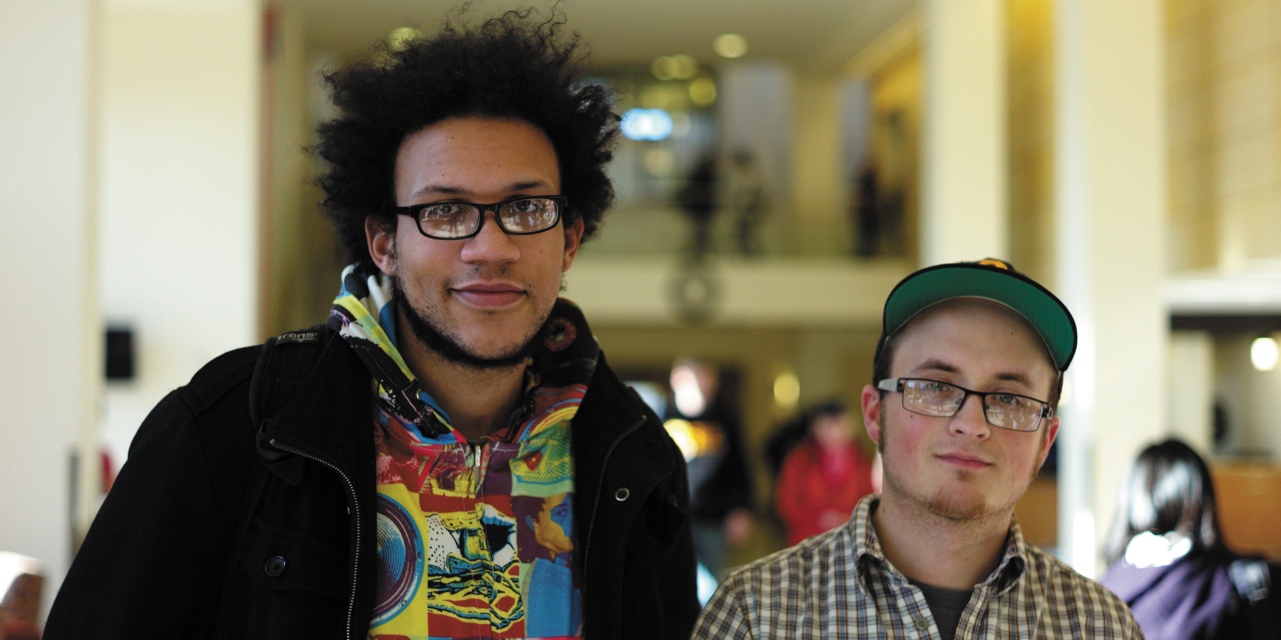
Coming to college is supposed to be a time for self-discovery and making new friends, but for Boris Yannick Ngongang, a senior Chinese major originally from Cameroon, the first six months of his freshman year at Concordia was spent in silence. As an African student at a college where students of color make up only 4.8% of the student population, Ngongang felt culturally isolated from his peers.
Ngongang said that loneliness is not uncommon for international students. He has known several who have transferred to Minnesota State University Moorhead or North Dakota State University because they didn’t feel like they fit in with Concordia’s mostly Caucasian student body.
“We don’t really feel like we belong,” Ngongang said.
Jesse Engen, a sophomore of Native American descent, has felt similarly. The only non-white student in three out of four of his classes, he is constantly reminded of the different perspective his Ojibwe heritage gives him.
“It’s actually really hard,” Engen said. He added that it is often difficult for him to communicate his feelings about the colonization of the United States to his white American peers, which for many represents growth and opportunity, but for Native Americans was a time of genocide.
“They don’t know the Native American perspective to it,” Engen said. “I was told by a student last year that [violence against Native Americans] happened a long time ago… Just the fact that they don’t know history or don’t know another perspective brings in a certain amount of racism.”
Ngongang has also had experiences with racism and ignorance at Concordia. Several people, he said, have asked him if Africans live in trees. Another incident happened when he was working in the Maize, and a student was uncomfortable with Ngongang swiping his student ID, apparently because he is black. The student reluctantly handed over the ID but seemed very apprehensive to take it back and touch it after Ngongang had, Ngongang said.
“It hurts,” he said.
He said that he has become accustomed to occasional incidences like these since coming to America and is able to deal with them well. However, he said, it is not as easy for other students who have never been to the United States before.
Both men agreed that helping students of color feel comfortable at Concordia is a campus-wide effort. Engen would like to see more done to provide minority students with role models among the faculty and staff who can understand their perspectives and situations.
Until last year, Concordia’s American Indian Outreach office provided Native American students a place to go to get this kind of support. The grant for that office, however, ran out last semester, leaving Engen and others without a valuable resource.
“That’s something that a lot of minorities try to find in everyday life—someone to understand them,” Engen said.
Karis Thompson with the Office of Intercultural Affairs said she wants to create a space for all students to find belonging in diversity.
“Being part of a community of people who are like you is an important part of adult identity formation,” Thompson said.
Thompson recognizes the “unique challenges” Concordia faces given its composition, but hopes that over time and through events sponsored by the Office of Intercultural Affairs—such as the weekly Tea House dialogues in the King Intercultural Center—interest in cross-cultural understanding will begin to grow.
“Every perspective is equally legitimate,” Thompson said.
She said she thinks that growing diversity in the student body will help to further this understanding.
“I think that having a critical mass of students with diverse backgrounds would start to create interest and appreciation for pluralistic diversity on campus,” she said.
Vice president for Enrollment Steve Schuetz said his office is also working to increase diversity at Concordia.
“We, like most colleges, feel it is important to enroll, retain and graduate students of diverse backgrounds,” Schuetz said. “Our long-term objective is to have the enrollment at the college reflect the national make-up in terms of ethnicity.”
Schuetz said that Concordia works in conjunction with organizations in the Twin Cities like College Possible and Avid which strive to make college a reality for under-privileged and inner-city teens. Concordia also recently opened a new position, the Assistant Director of Admissions for Multicultural Recruitment, which they hope to fill soon.
In response to the closing of American Indian Outreach at Concordia, the Office of Admissions hired two new Native American admissions liaisons who will work on a variety of initiatives to target Native American students.
“We’re not able to [reach out to Native American students] to the extent that we used to,” Schuetz said, but he hopes that the new hires will be valuable in continuing to bring students from Native American communities to Concordia.
Schuetz said that the problem with diversifying Concordia’s student body is often that the cost and location of Concordia are not attractive to students of color. He realizes that addressing these issues will open the doors to greater diversity on campus.
While the administration plays a key role in creating a diverse and accepting campus, Ngongang believes that this kind of change must come from the students. A good start, he said, is for students to reach out to one another. It was American students reaching out to him, he said, that brought him out of the six-month silence he experienced freshman year.
“The campus itself should say, ‘What can we do to know more?” he said. “[Students of color and international students] are not just here to dress up the campus. We’re also important.”

